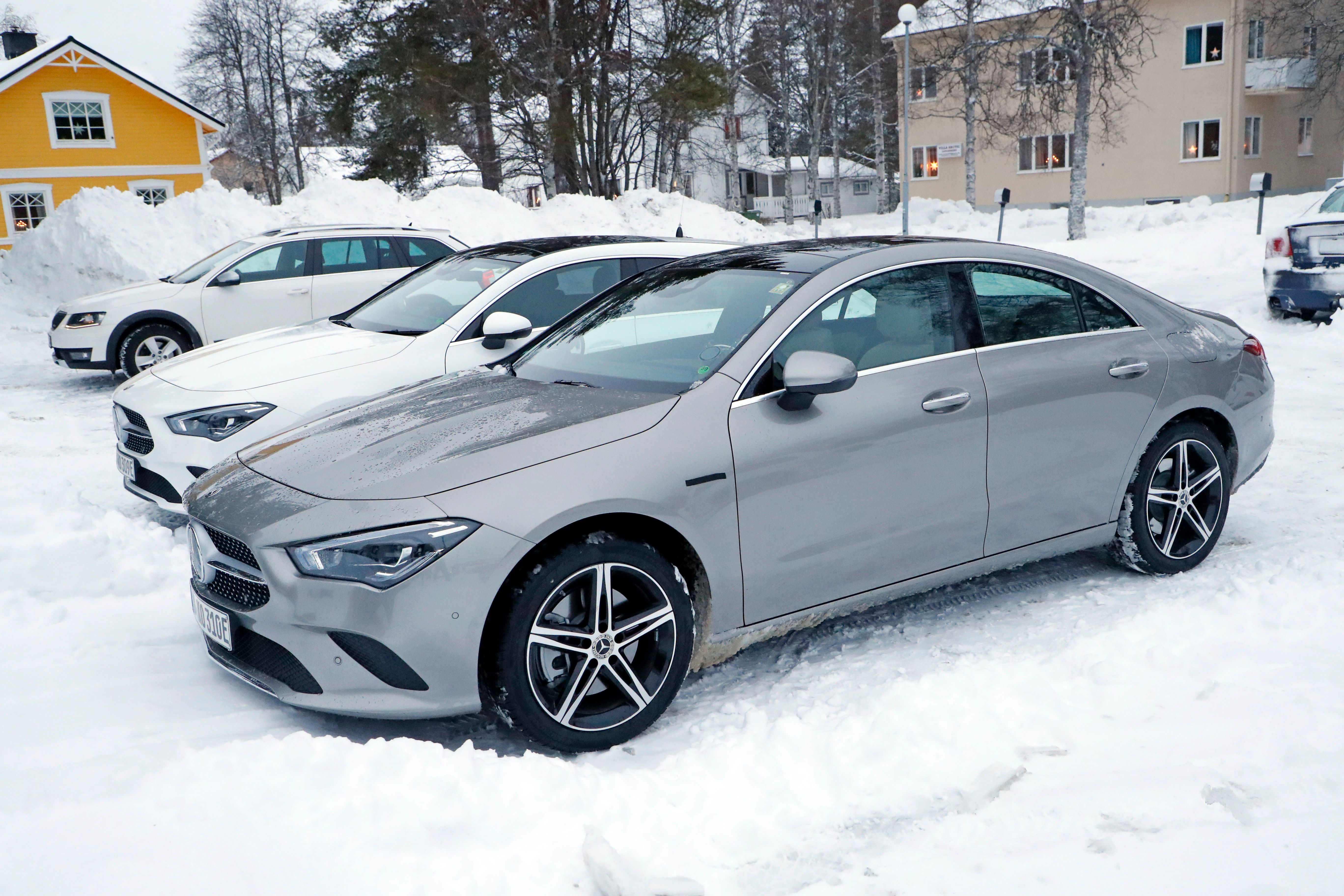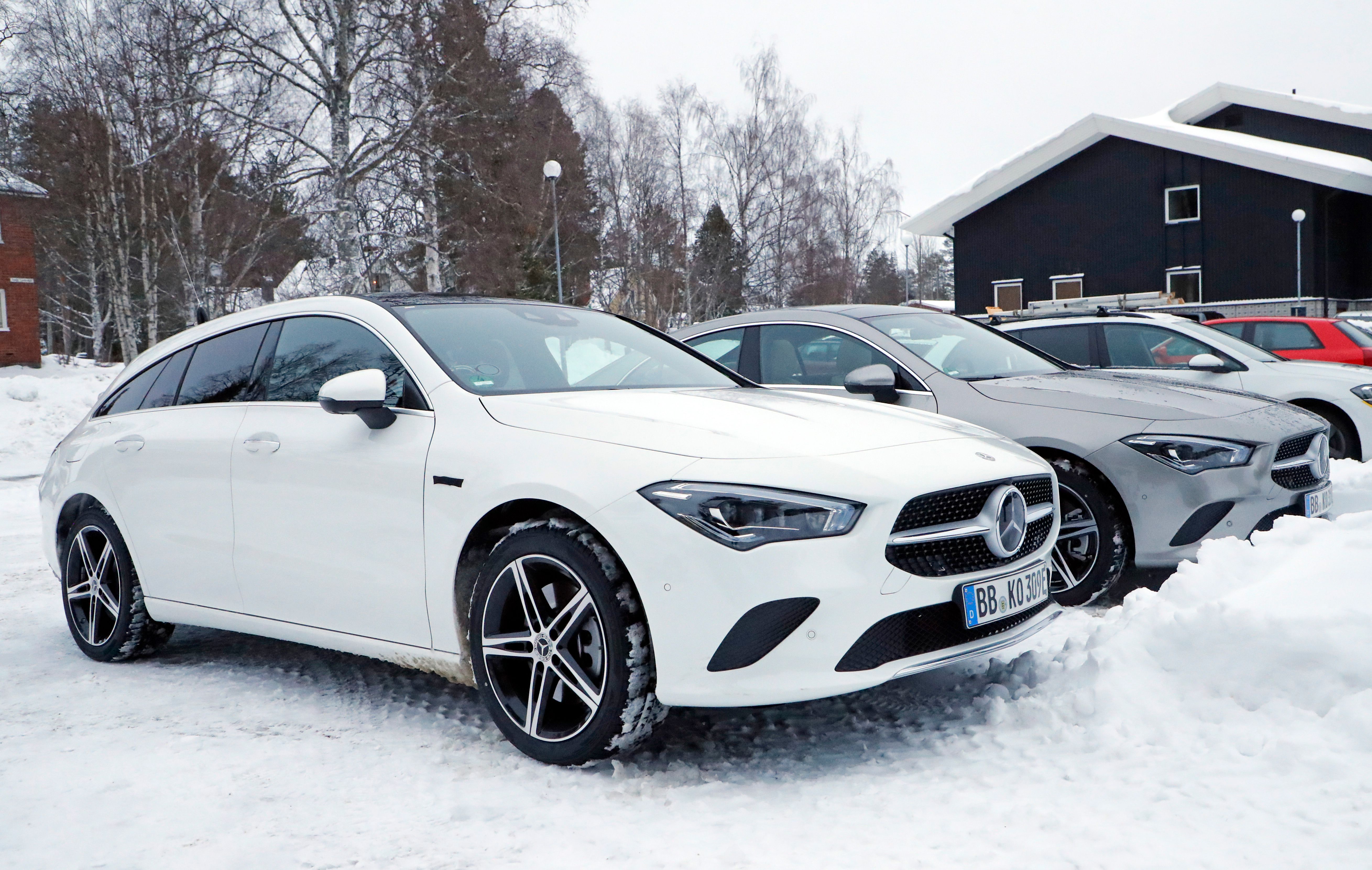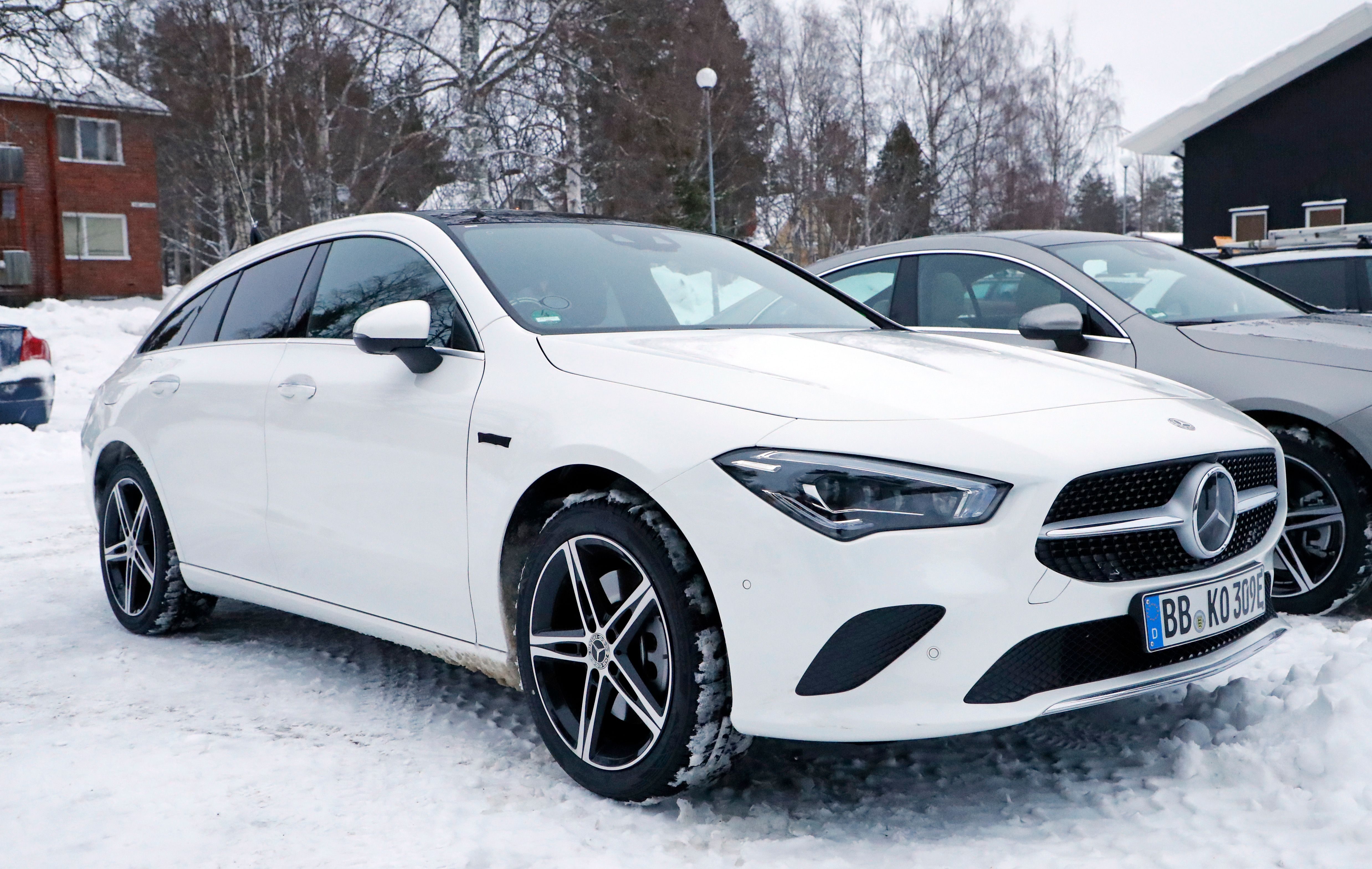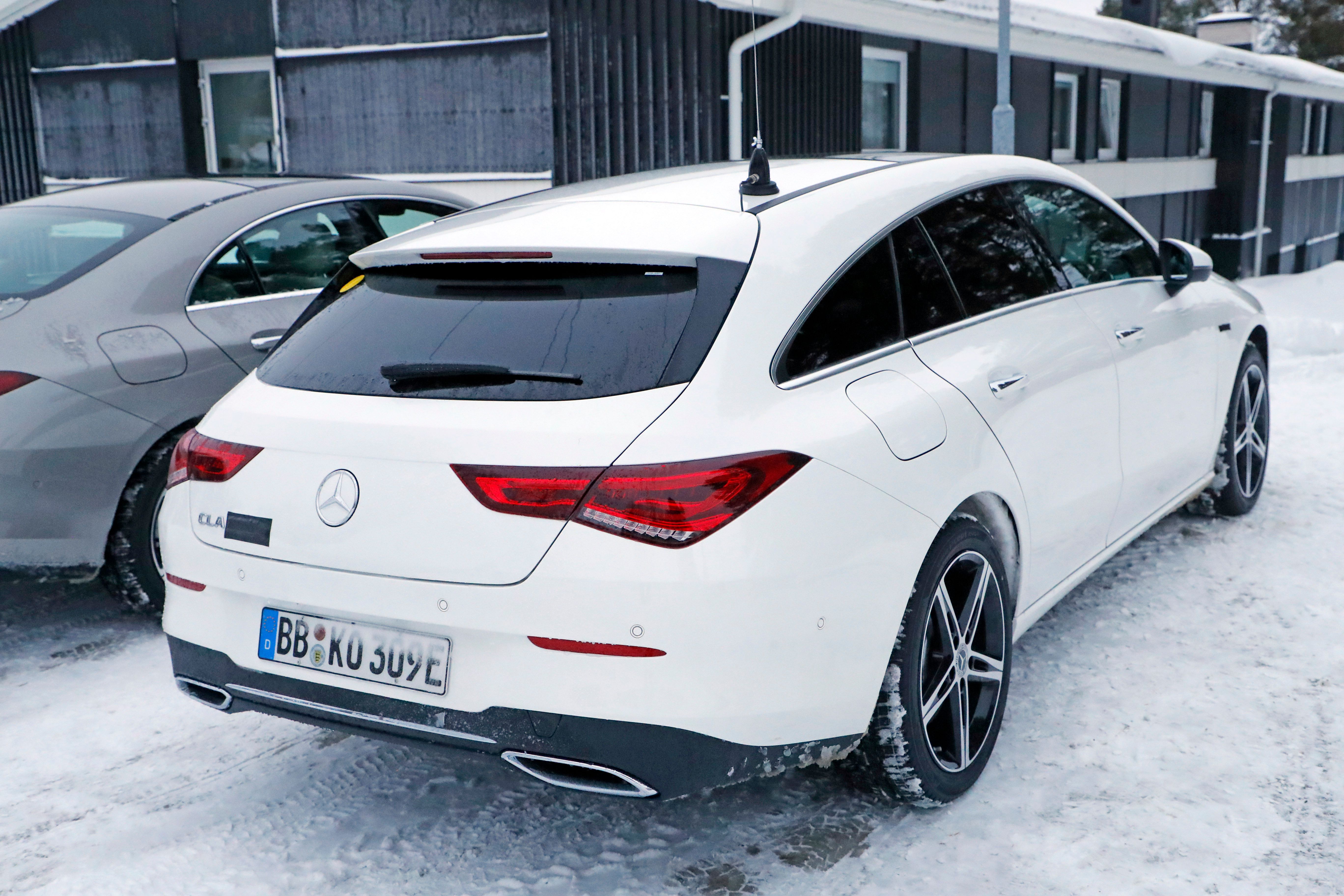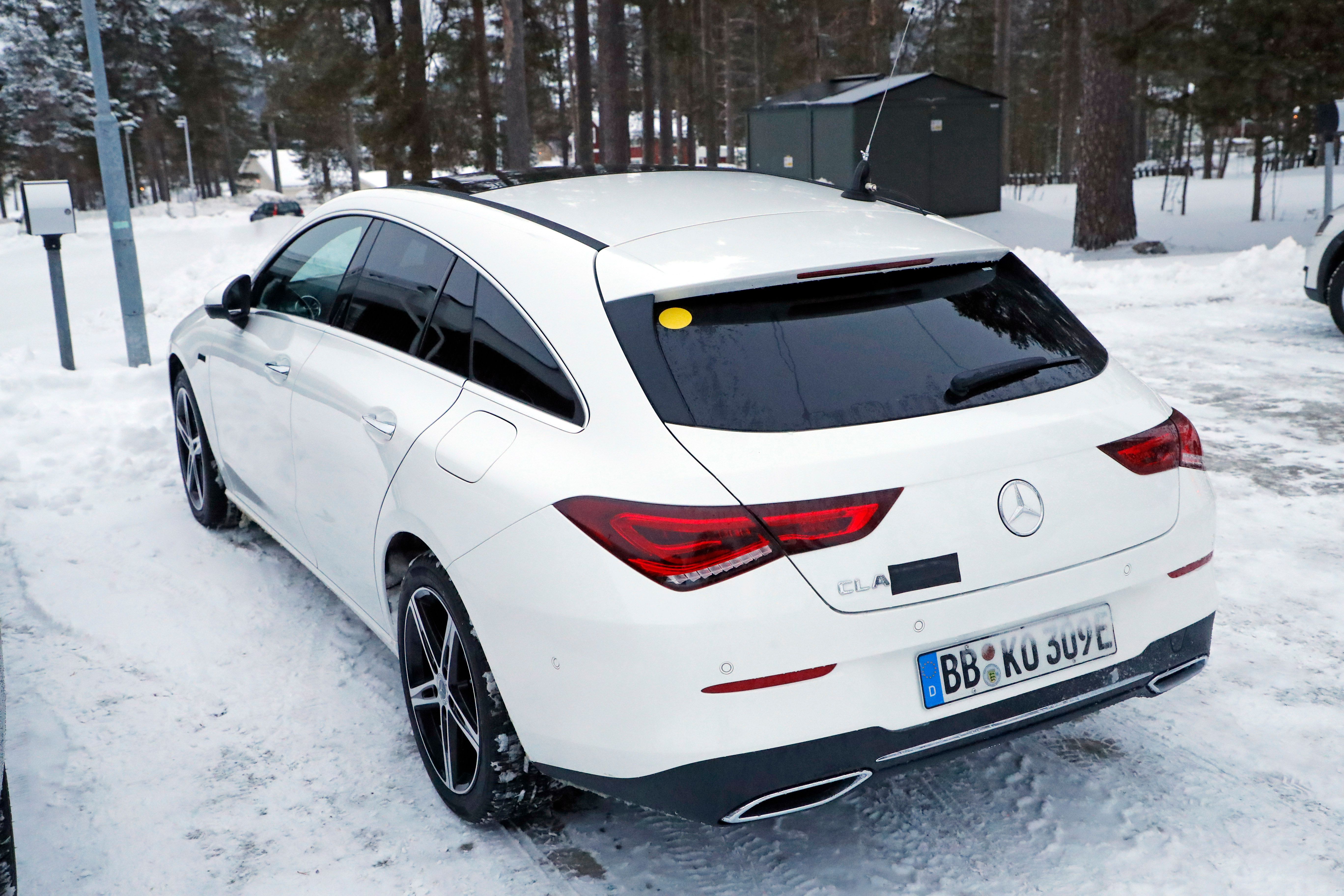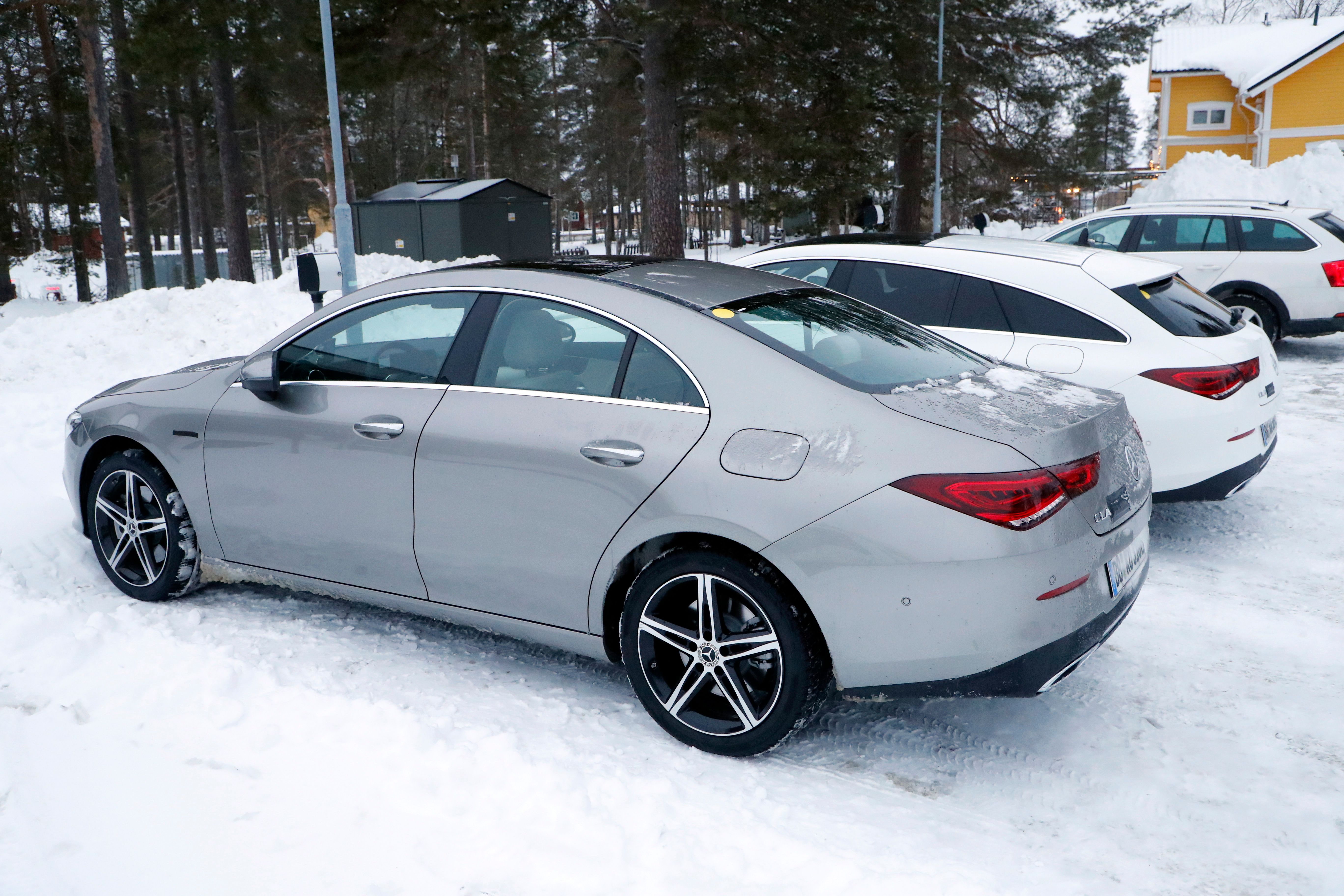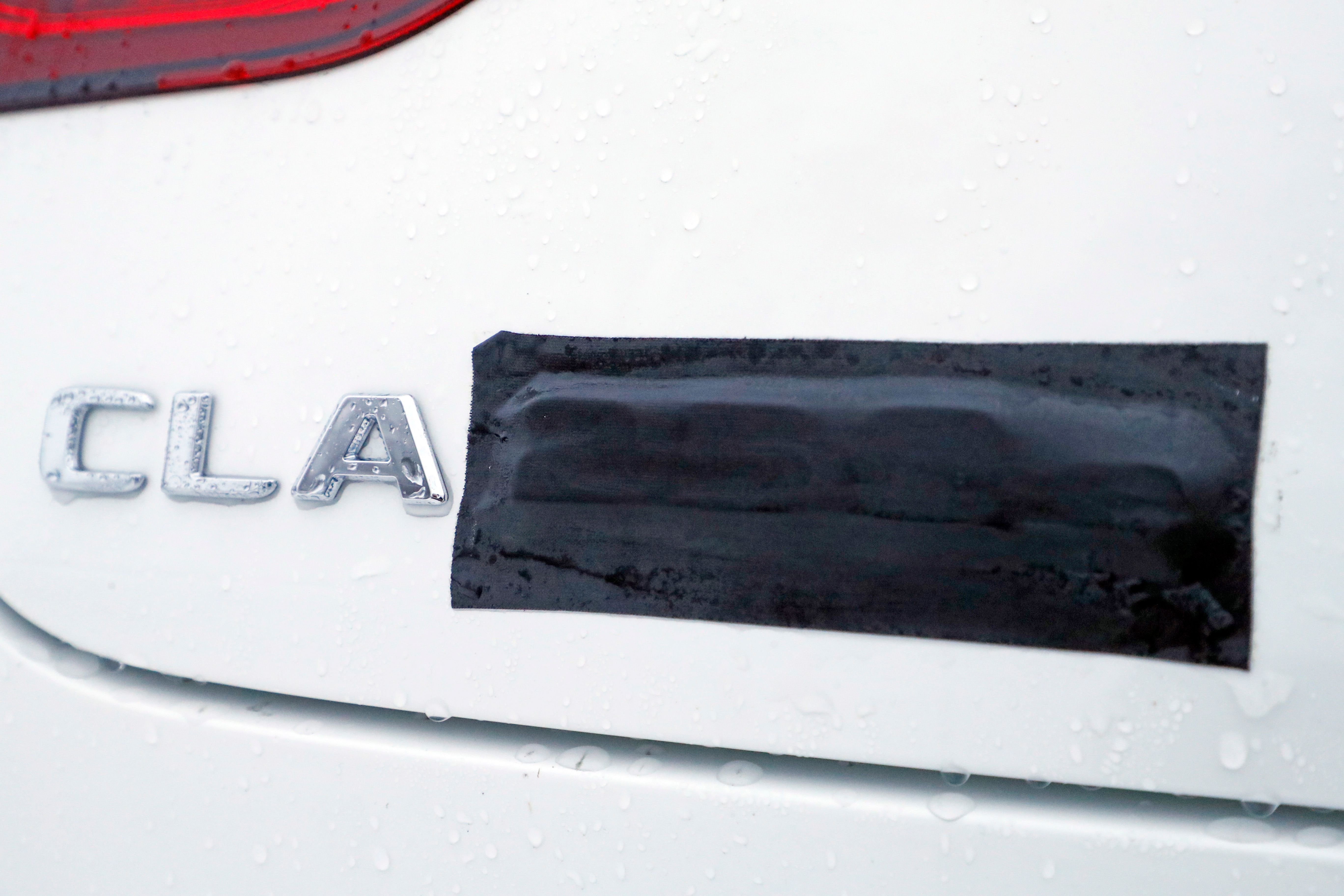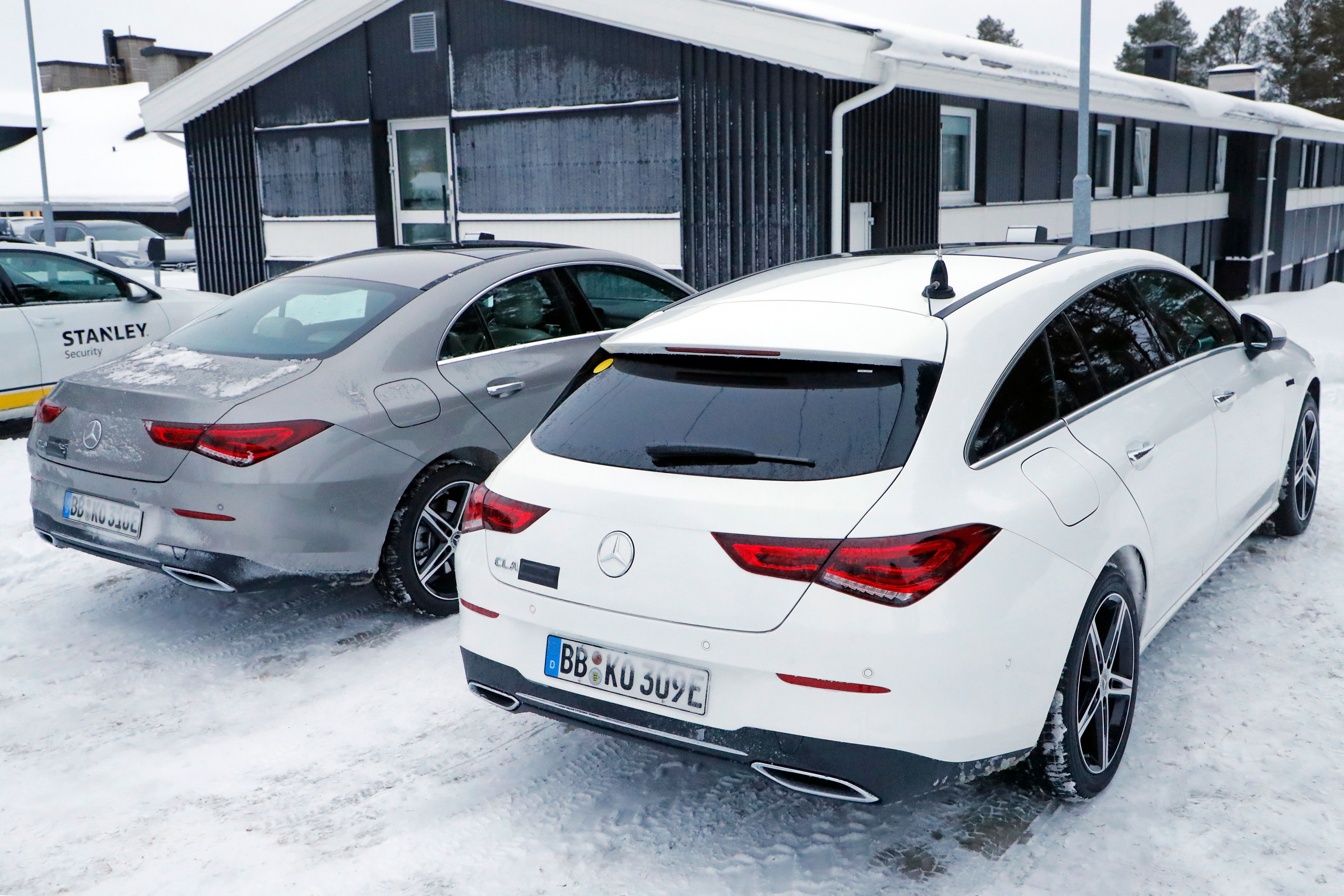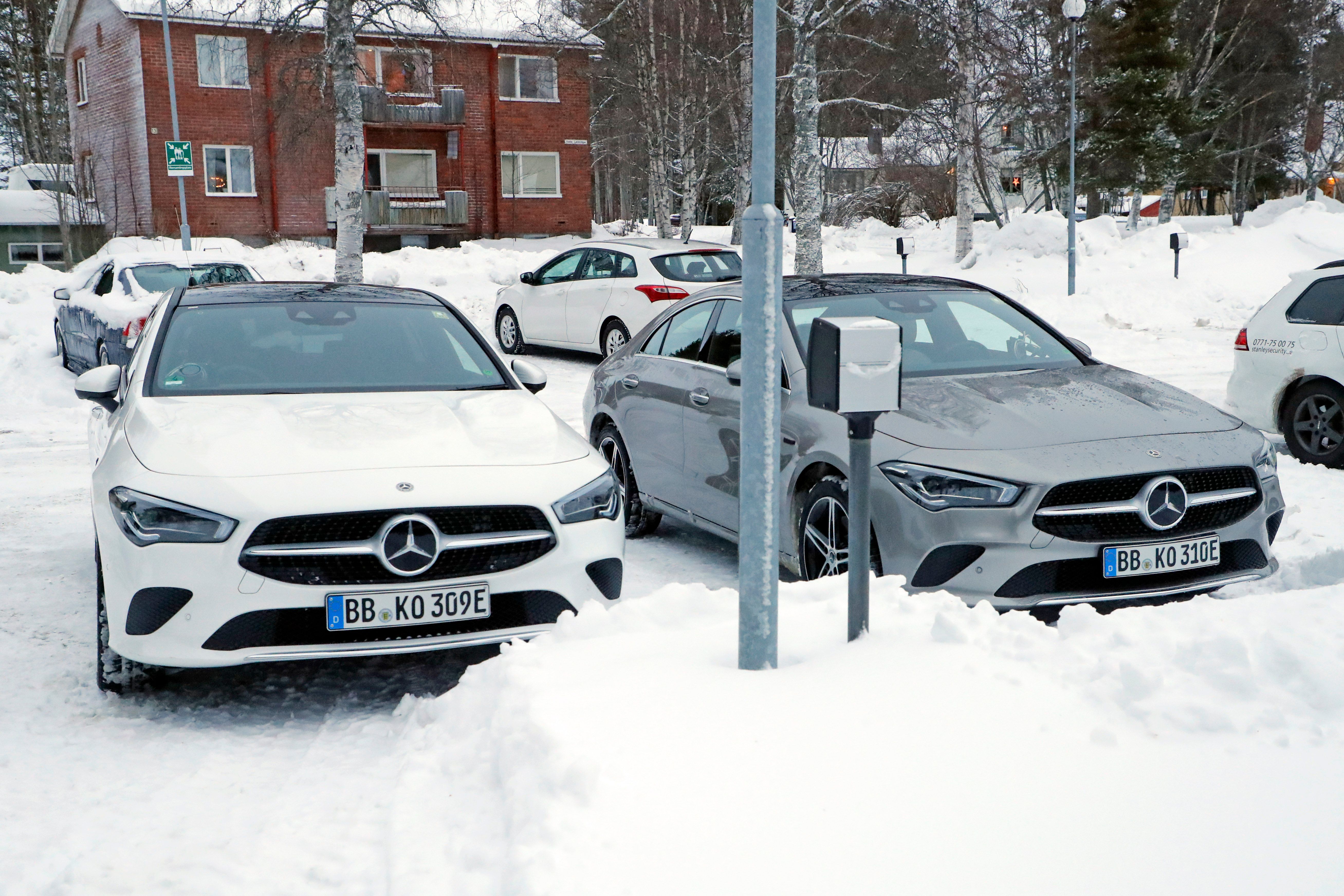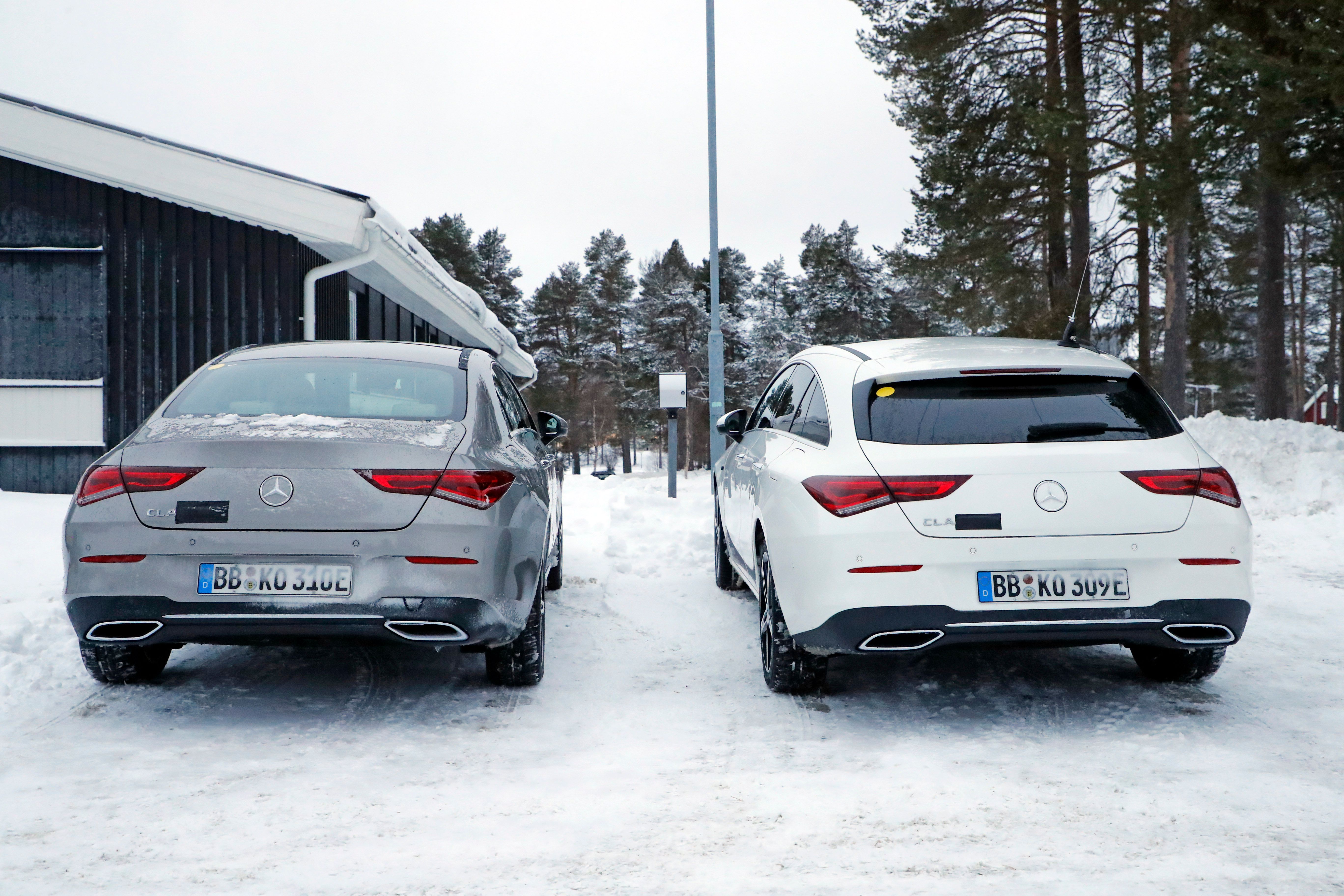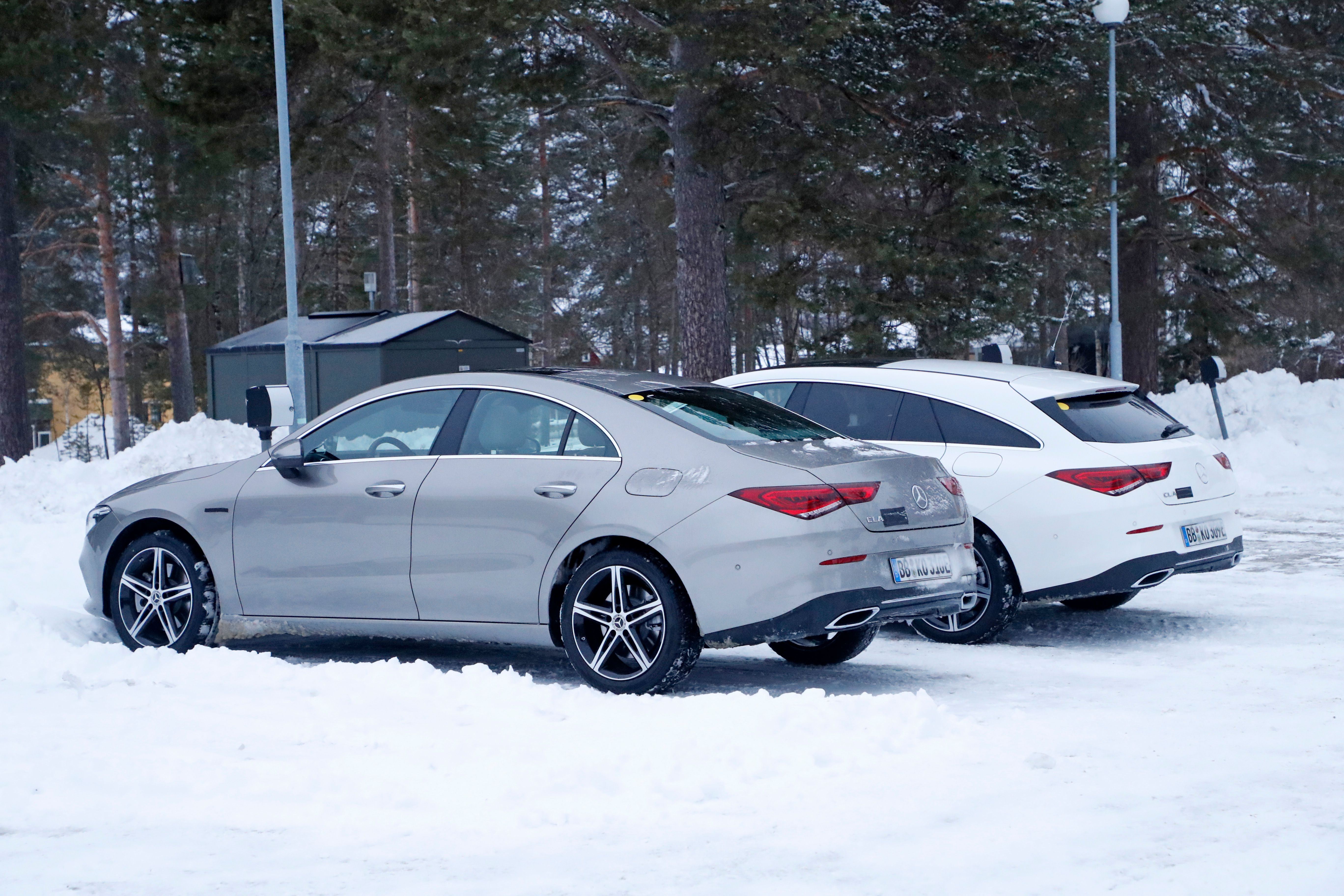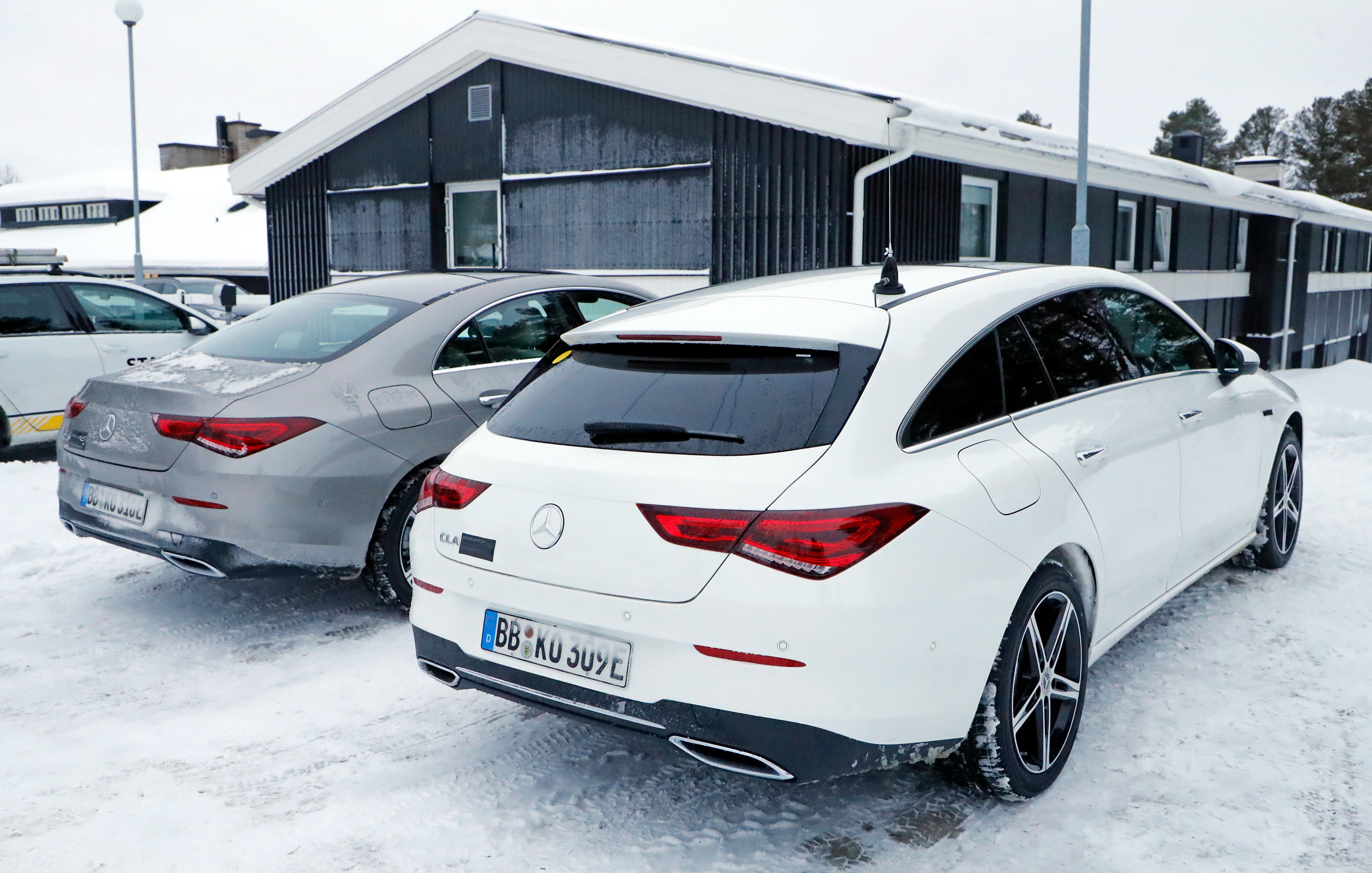The Mercedes-Benz CLA is en route to receiving a plug-in-hybrid variant that would go under the 250 e badging. Info is scarce, but Stuttgart’s compact four-door coupé could be in line for the same powertrain used by the A-Class and B-Class PHEV.
On the design front, changes are to be of minimal impact both inside and out and will be resumed to new badging and the addition of plug-in sockets that would allow users to recharge their cars when not in use. Although there’s no word on a debut date, the 2020 Geneva Motor Show looks like a plausible launch platform for the CLA PHEV. Here’s everything we know so far.
2021 Mercedes-Benz CLA PHEV
- Make: Array
- Model: 2021 Mercedes-Benz CLA PHEV
- [do not use] Vehicle Model: Array
Exterior
The second-generation Mercedes-Benz CLA is one of the sleekest compact models on the market. Stuttgart’s designers did enough to clearly differentiate it from the A-Class sedan to prevent the two models from cannibalising one another and the end result is undoubtedly an eye-pleaser.
Subsequently, the addition of electrification shouldn’t mess with the CLA’s size. Here’s a complete list of dimensions for the CLA Coupé:
|
Length |
4,688 mm / 184.5 in |
|---|---|
|
Width |
1,830 mm / 72 in |
|
Width (w/ side mirrors) |
1,999 mm / 78.7 in |
|
Height |
1,439 mm / 56.6 in |
|
Wheelbase |
2,729 mm / 107.4 in |
|
Front track |
1,612 mm / 63.4 in |
|
Rear track |
1,602 mm/ 63 in |
Interior
We weren’t able to produce photos of the test mules’ interiors, but again, the CLA and CLA Shooting Brake PHEV will look just like before when it comes to cabin design. That is, the CLA PHEV is going to share its cabin topography with the A-Class. >
Elsewhere in the cabin, range-topping CLA PHEV models will continue to sport the dual 10.25-inch screens, as well as the same ambient lighting setup that initially made its debut in the A-Class.
Space-wise, in the case of the A 250 e and B 250 e, Mercedes-Benz was adamant that the way it managed to mount the drivetrain’s electric bits and bobs doesn’t affect cabin space or trunk capacity, so the CLA PHEV’s interior dimensions should carry over from the ICE-powered model, as such:
2020 Mercedes-Benz CLA interior dimensions Max. headroom, front
1,023 mm / 40.2 in
Headroom, rear
908 mm / 35.7 in
Legroom, front
1,062 mm / 41.8 in
Legroom, rear
861 mm / 33.8 in
Elbow room, front
1,457 mm / 57.3 in
Elbow room, rear
1,454 mm / 57.2 in
Shoulder room, front
1,400 mm / 55.1 in
Shoulder room, rear
1,372 mm / 54 in
Load compartment width
1,444 mm / 56.8 in
Load compartment depth
1,054 mm / 41.4 in
Cargo space
460 l / 16.2 cu ft
There’s no official word on the CLA PHEV’s drivetrain, but we can only assume that Mercedes-Benz will fit its sleek sedan with the same internals that power the A-Class A 250 e (hatchback and sedan) and the B-Class B 250 e.
Essentially, we’re dealing with a 1.33-liter four-cylinder gasoline engine (158 horsepower) paired to an electric motor. The e-motor sits right inside the gearbox housing, between the gearbox itself and the ICE (Internal Combustion Engine) and it eliminates the need for a 12-volt starter, as the e-motor performs the combustion engine’s start up. With 75 kilowatts on tap, the e-motor contributes to the system’s overall output of 160 kilowatts (214.5 horsepower, 216 PS). Torque is rated at 450 Newton-meters (or roughly 332 pound-feet) and coupled with the power output, it turns the A-Class into a warm hatch of sorts, capable of sprinting from zero to 100 kilometers per hour (62 miles per hour) in 6.6 seconds on to a top speed of 140 kilometers per hour / 87 miles per hour (in pure-electric mode) or 235 kilometers per hour / 146 miles per hour.
The eight-speed 8G DCT dual clutch gearbox sends power exclusively to the front wheels, while the e-motor is fed by a 15.6-kWh battery pack that’s water cooled and weighs around 150 kilograms (330 pounds). Mercedes opted to place the battery under the rear seats, just in front of the rear axle and according to its literature, you can cover between 70 to 75 kilometers (roughly 43 to 47 miles) by relying on electricity alone.
There’s no word of the CLA PHEV coming to the U.S. at this point, although Mercedes is already offering the CLA 250 here, for a starting price of $36,650. It can also be had with the 4Matic all-wheel drive setup for at least $38,650, or in AMG 45 flavor starting at $53,100. We’re guessing a PHEV version of the CLA would demand in the region of $40,000, should it arrive in the U.S.
In Germany, the most affordable CLA money can buy is the CLA 180, which starts at €31,475. The CLA 250 will leave you without €39,505, so we can assume that the 250 e will start a tad higher, perhaps at around €41,000-€42,000.
The sportier yet not-that-sleek alternative to the upcoming Mercedes-Benz CLA PHEV is BMW’s own stab at plug-in-hybrid electrification, the 3 Series 330e. It uses a four-cylinder, 2.0-liter gasoline engine twinned to a BMW eDrive electric motor integrated into the eight-speed Steptronic transmission. The e-motor also acts as a generator that handles energy recuperation during braking for the 12-kWh Lithium-ion battery pack.
In the 3 Series 330e, the overall system output is 185 kW (248 horsepower) or 215 kW (288 horsepower) with XtraBoost and 420 Newton-meters (310 pound-feet) of torque. The 330e can go for 59 to 66 kilometers (37 to 41 miles) using just electric energy. It’s no slouch either: 0-100 kilometers per hour (0-62 miles per hour) happens in 5.9 seconds with a top speed of 230 kilometers per hour (143 miles per hour), but keep in mind that you’ll only be able to reach 140 kilometers per hour (87 miles per hour) in pure EV mode.
Read our full review on the 2020 BMW 3 Series 330e
The plug-in-hybrid A3 Sportback is marked by the e-tron badge and mixes a 1.4-liter TFSI gasoline engine good for 110 kilowatts (148 horsepower) and 250 Newton-meters (184.4 pound-feet) of torque with an electric motor rated at 75 kW (100 horsepower) and 330 Newton-meters (243 pound-feet) of torque. Overall, the A3 Sportback e-tron relies on 150 kilowatts (201 horsepower) channeled through a six-speed S tronic dual-clutch transmission.
On the performance front, it is good for a top speed of 222 kilometers per hour (138 miles per hour), but the electric mode will only allow you to go as fast as 130 kilometers per hour (81 miles per hour). Speaking of which, provided you don’t go berserk on the throttle, the A3 Sportback e-tron has a pure electric range of around 48 kilometers (30 miles). If you do decide to floor it, then hybrid mode takes you from 0 to 100 kilometers per hour (62 miles per hour) in 7.6 seconds, while EV mode cuts the sprint time to 4.9 seconds.
Read our full review on the 2019 Audi A3 Sportback e-tron
Those looking to buy a CLA for city use can now ignore the diesel altogether and go for a gasoline-hybrid powertrain that’s set to produce less emissions while still offering a low fuel consumption average. As the current trend is to get rid of lung-choking emissions around the city, expect more and more carmakers (also also vehicles in Merc’s lineup) to adopt this sort of powertrain. Sure, having the added input of an electric motor also spices up the car’s performances, but that’s not the main aim for the plug-in-hybrid CLA, but rather a consequence. Mind you, this is not a BMW i8 or a McLaren P1. Nonetheless, those who opt for a plug-in-hybrid such as the incoming CLA 250 e will be doing others a service beside themselves, as today’s cities need more green(er) cars and less soot to be sucked in by their inhabitants.
Drivetrain
Prices
Competition
BMW 3 Series 330e
Audi A3 Sportback e-tron
Conclusion

